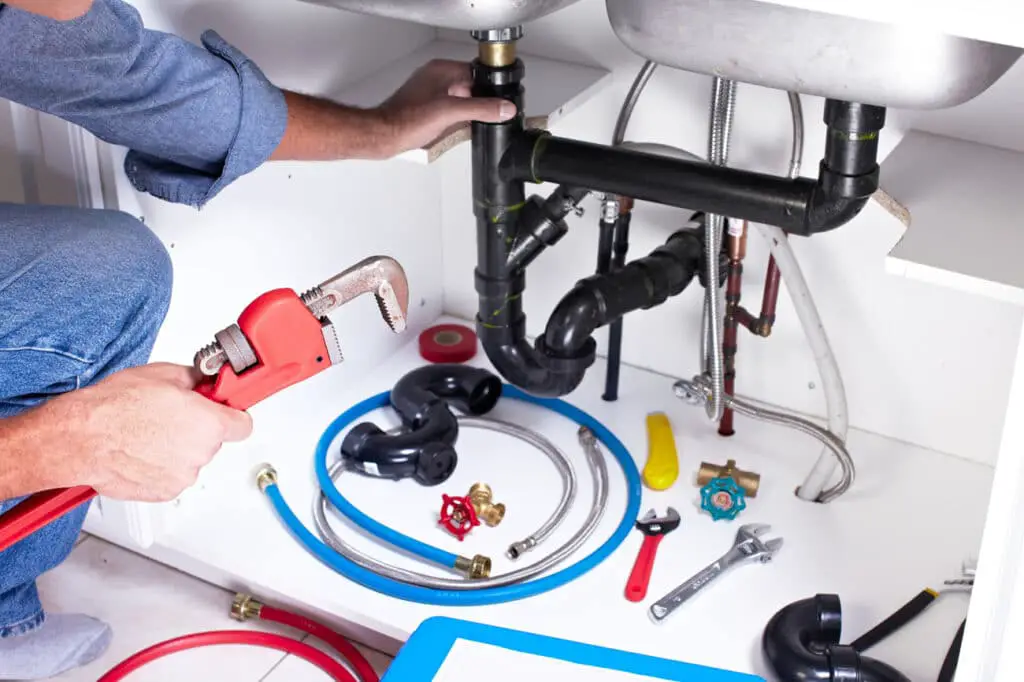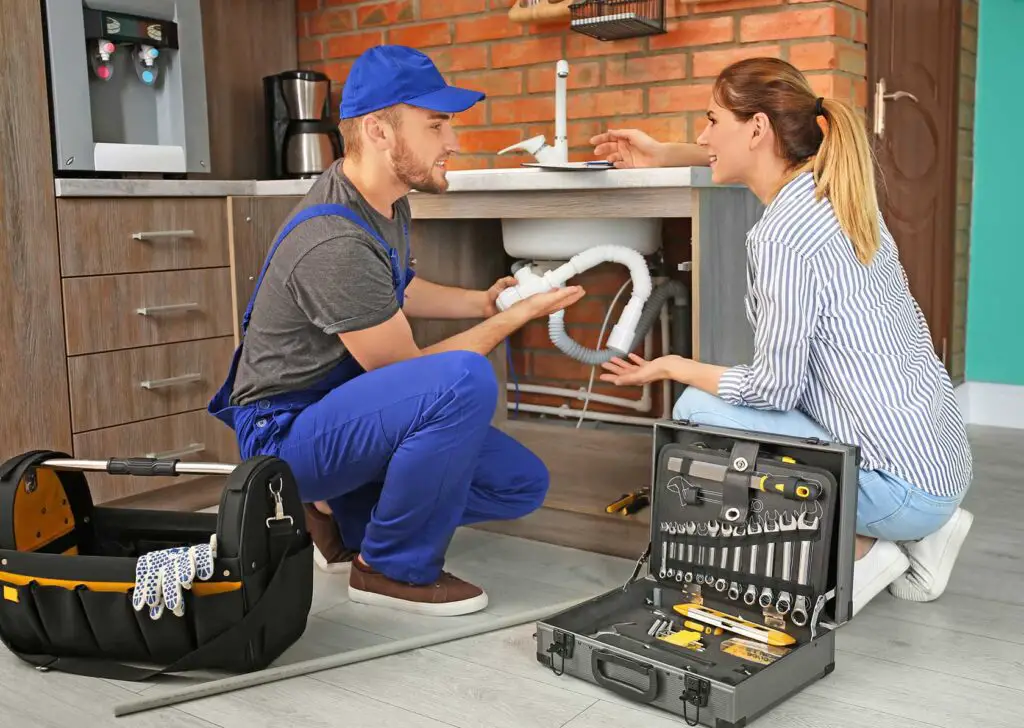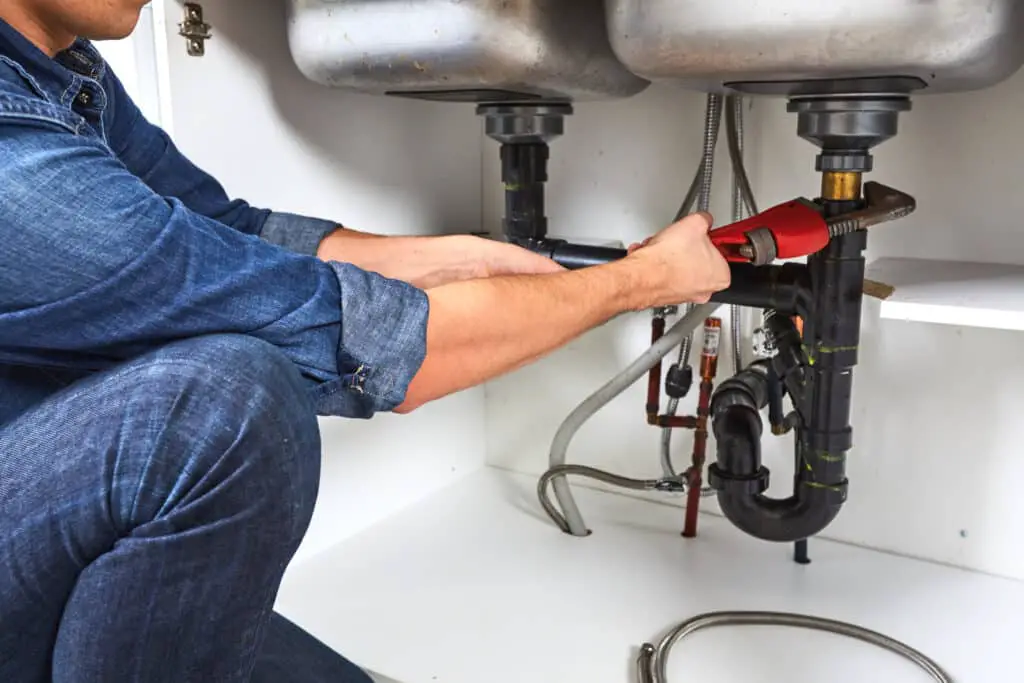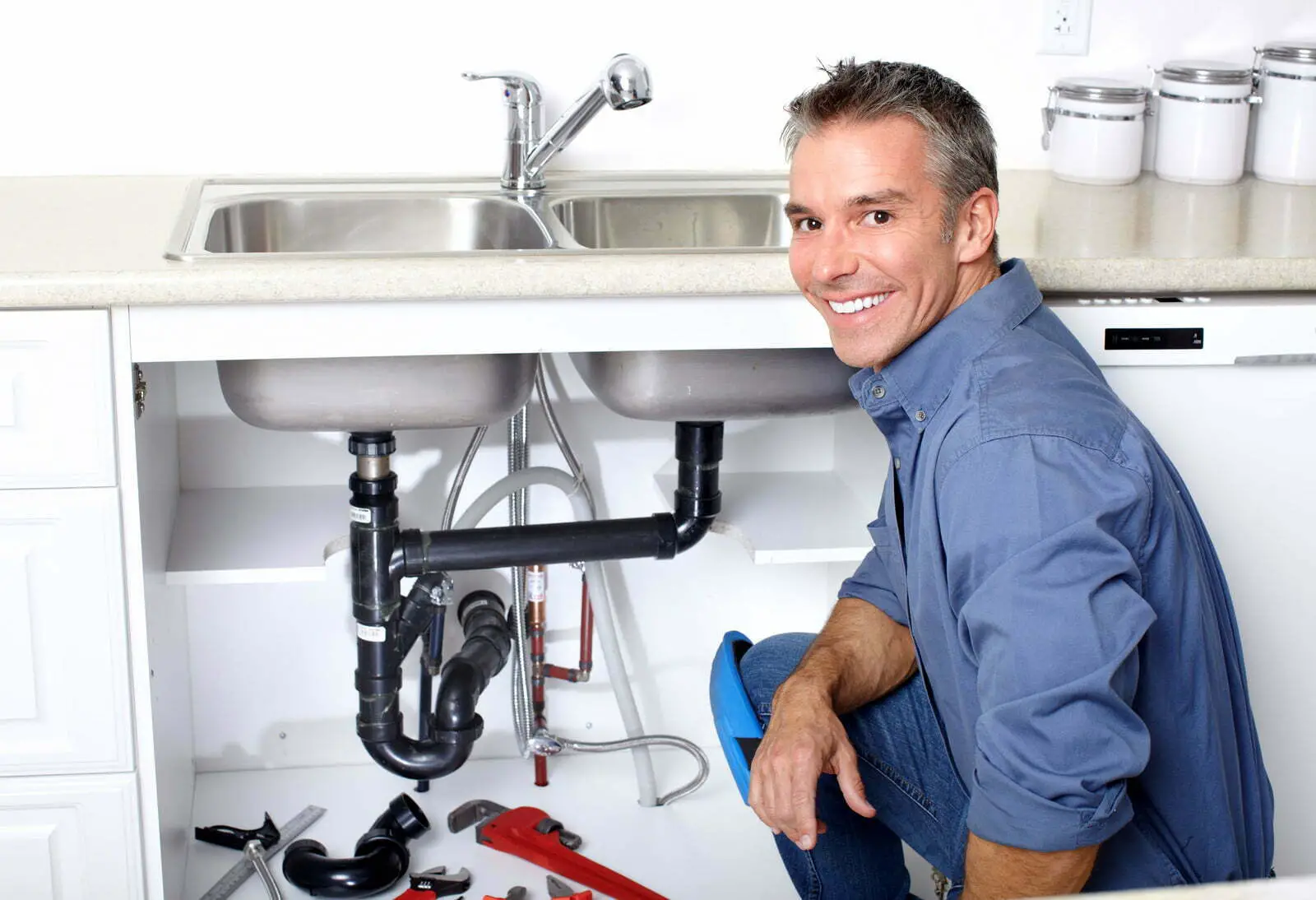What Is A Plumbing Cleanout
Introduction
Plumbing systems are an essential part of any residential or commercial building, ensuring the efficient flow of water and waste. While most people are familiar with basic plumbing fixtures such as sinks, toilets, and showers, there are other crucial components that contribute to the overall functionality and maintenance of the system. One such component is the plumbing cleanout.
Cleanouts are typically comprised of a capped pipe that extends vertically from the ground or wall. The cap can be unscrewed, providing plumbers with direct access to the pipe for maintenance purposes. This access point allows plumbers to insert tools, such as drain snakes or hydro-jetting equipment, to remove clogs and restore the proper flow of water and waste.

What Is A Plumbing Cleanout?
A clean out is a sewer line access point for cleaning and unclogging. A plumbing cleanout is essential for removing obstructions and debris from pipes. It connects to the main drain line at the foundation or in the basement. Plumbers can directly access the system through the cleanout, a capped pipe vertically from the main sewer line.
The main goal of a plumbing cleanout is to make maintenance and troubleshooting easier. The cleanout allows plumbers to use drain snakes or hydro-jetting equipment to clear plumbing clogs. It saves time and reduces interruption by not disassembling pipes or cutting walls.
A threaded or detachable cap makes cleanout removal easy for cleaning or inspection. Plumbers can remove the cover to inspect the pipe and find the problem. If needed, it allows effluent or sewage to depart.
What Is The Purpose Of A Clean Out In Plumbing?
A clean out is a sewer line access point for cleaning and unclogging. Clean outs are frequently found within three inches of the residence or building’s edge.
Plumbing cleanouts allow easy clog removal, maintenance, and system functioning. Cleanouts allow plumbers to use drain snakes or hydro-jetting equipment to unclog pipes. The cleanout eliminates the need to disassemble pipes or cut into walls to access the plumbing system, saving time and simplifying repairs.
Cleanouts are vital to preventative maintenance. Regular plumbing system cleanouts can detect concerns before they become significant. It helps plumbers detect clogs, silt accumulation, and other water flow issues. By proactively addressing these concerns, homeowners can avoid costly repairs and prolong plumbing system life.
What Is A Wall Cleanout In Plumbing?
Cleanouts allow a plumber to swiftly release clogs or inspect pipes without damaging the plumbing system, and they are strategically located to allow access to any area of the system.
Plumbing wall cleanouts allow access to the plumbing system without exterior pipes or fixtures. Wall cleanouts provide easy plumbing maintenance, repairs, and clog removal. This allows plumbers to directly access the main drain line or branch lines in the walls. This removes the need for substantial wall demolition or invasive plumbing repairs.
Plumbers can check, clean, and unclog pipes using wall cleanouts, which have removable covers. This feature allows specialists to use drain snakes or hydro-jetting equipment to remove clogs without damaging the wall, making troubleshooting easier.
How Do You Use A Plumbing Cleanout?
Steps For How to Clear A Main Sewer Line Clog
- Loosen the Main Drain Cleanout Cap (aka Sewer Cleanout Pipe)
- Remove Cleanout Cap, Allow Water to Backflow to Opening
- Insert the Snake into the Sewer Line Pipe Opening
- Run the Tool Until All Clogs are Gone
- Clean Up and Replace Sewer Cleanout Cap (Don’t overtighten.)
Using a plumbing cleanout is a relatively straightforward process that allows for the clearing of clogs and maintenance of the plumbing system. Here is a step-by-step guide on how to use a plumbing cleanout:
Locate the cleanout:
The cleanout is typically a capped pipe that extends vertically from the main sewer line. It is usually located near the foundation of a building or in the basement. Look for a visible pipe with a removable cap.
Remove the cap:
Use a wrench or pliers to unscrew the threaded cap or lift off the removable cap. Be cautious as some residual water or sewage may be present.
Insert the appropriate tool:
Insert a plumbing snake, also known as a drain snake, into the cleanout. The snake’s flexible cable will allow you to navigate through the pipe and break up or remove the clog.
Rotate or push the snake:
With the snake inserted, rotate its handle or push it further into the pipe, depending on the design of the snake. This action will help dislodge the clog or debris obstructing the flow.
Retrieve the snake and debris:
After you have rotated or pushed the snake, slowly pull it back out of the pipe. As you remove the snake, it may bring the clog or debris with it. Make sure to clean off any accumulated debris from the snake before storing it.
What Is The Purpose Of Pvc Cleanout?
To allow access for cleaning or inspection. Also provided with a Molded Test Plate that can be cut out following a Hydrostatic Stack Test for leaks.
The purpose of a PVC cleanout is to provide easy access for clearing clogs, performing maintenance, and ensuring the smooth functioning of a PVC (polyvinyl chloride) plumbing system. PVC cleanouts are specific types of cleanouts designed for use with PVC pipes, which are commonly used in residential and commercial plumbing systems.
One of the main purposes of a PVC cleanout is to provide a convenient access point for clearing clogs. When a blockage occurs in the PVC pipes, the cleanout allows plumbers to insert specialized tools, such as drain snakes or hydro-jetting equipment, to remove the obstruction. This eliminates the need to dismantle or cut into the PVC pipes, minimizing disruption and saving time during repairs.
Additionally, PVC cleanouts facilitate maintenance and inspection of the plumbing system. The cleanout typically consists of a threaded or removable cap that allows plumbers to access the interior of the PVC pipe. This enables them to inspect for potential issues, such as build-up, cracks, or damage, and perform preventative maintenance to ensure optimal flow and performance of the system.

What Is The Size Of Cleanout?
4 inches
Cleanouts shall be the same nominal size as the pipe they serve up to 4 inches (102 mm). For pipes larger than 4 inches (102 mm) nominal size, the size of the cleanout shall be not less than 4 inches (102 mm).
The size of a cleanout in plumbing refers to the diameter or dimensions of the cleanout fitting. Cleanouts come in various sizes to accommodate different types of plumbing systems and pipe diameters. The size of a cleanout is typically determined by the size of the pipe it is connected to.
Cleanouts are available in standard sizes ranging from 2 inches to 6 inches in diameter. The most common sizes are 3 inches and 4 inches, which are often used for residential plumbing systems. These sizes are suitable for handling typical household wastewater and sewage flow.
For larger commercial or industrial plumbing systems, cleanouts with larger diameters, such as 6 inches, may be used. These larger cleanouts can handle higher volumes of water and larger pipe diameters typically found in commercial buildings or larger residential structures.
The size of the cleanout is an important consideration when installing or maintaining a plumbing system. It is crucial to select a cleanout size that matches the pipe diameter to ensure a proper fit and optimal flow. Using a cleanout that is too small can restrict flow and impede the effectiveness of clearing clogs or performing maintenance.
What Is A Two Way Cleanout?
A two-way cleanout, also known as a double cleanout, offers the ability to clean out the pipe in two directions—the direction of the pipe that goes into your home and the direction of the pipe that connects to the main sewer line or the septic tank.
It is a type of cleanout fitting in plumbing that provides access to the main drain line from two different directions. It is designed with two openings, allowing for greater flexibility and convenience during maintenance and clearing of clogs.
The main purpose of a two-way cleanout is to facilitate access to the plumbing system for effective troubleshooting and maintenance. By providing access points from two directions, plumbers can choose the most convenient entry point based on the location of the clog or the specific needs of the situation. This flexibility can save time and effort when dealing with plumbing issues, as it allows plumbers to approach the problem from multiple angles.
The two-way cleanout is typically installed at a strategic point in the plumbing system, often near the foundation of a building or in the basement. One opening of the cleanout is usually connected to the main drain line, while the other opening can be used for different purposes, such as connecting to a secondary branch line or serving as an additional access point for maintenance.
Why Is A Plumbing Cleanout Important?
A plumbing cleanout serves several important purposes. It provides a convenient entry point for plumbers to access the pipes and remove any clogs or blockages. It also allows for inspection of the plumbing system to identify potential issues or leaks.
A plumbing cleanout is of utmost importance in a plumbing system for several reasons. Here are some key reasons why a plumbing cleanout is important:
Clog removal:
One of the primary purposes of a plumbing cleanout is to provide easy access for clearing clogs. Clogs can occur in pipes due to a buildup of debris, grease, hair, or other materials. The cleanout allows plumbers to insert specialized tools, such as drain snakes or hydro-jetting equipment, to remove the obstruction quickly and effectively. Without a cleanout, accessing and clearing clogs would require more invasive and time-consuming methods.
Maintenance and inspection:
A plumbing cleanout enables maintenance and inspection of the plumbing system. By removing the cleanout cap, plumbers can inspect the interior of the pipes for any signs of damage, blockages, or wear. Regular maintenance through the cleanout can help identify potential issues early on, preventing major plumbing problems and costly repairs in the future.
Preventive measures:
Routine cleaning and maintenance through the cleanout can help prevent clogs and keep the plumbing system in optimal condition. Clearing out debris and buildup from the pipes can ensure smooth water flow and minimize the risk of blockages. It also helps extend the lifespan of the plumbing system by reducing strain and potential damage caused by clogs.
Easy access for repairs:
In the event of a plumbing issue or repair, a cleanout provides easy access to the pipes, minimizing the need for extensive dismantling or excavation. Plumbers can reach the problem area directly through the cleanout, saving time and reducing the disruption to the property.
Backup prevention:
In case of a backup or overflow, the cleanout serves as an exit point for wastewater or sewage. It allows the excess water or sewage to be safely drained away, preventing potential damage or contamination to the property.

Conclusion
Plumbing cleanouts are indispensable components of plumbing systems that facilitate proper maintenance, inspection, and clearing of blockages. These access points serve as gateways to the main sewer line or drainage system, allowing plumbers to address potential issues efficiently.
The presence of plumbing cleanouts is crucial for the overall functionality and longevity of a plumbing system. Regular inspection and maintenance of cleanouts help identify and resolve problems like clogs, tree root intrusions, or pipe damage before they escalate into more significant issues. By addressing these problems early on, homeowners and property owners can save both time and money in the long run.
Plumbing cleanouts offer convenience and efficiency to plumbers. With easy access to the main pipes, they can utilize specialized tools to remove clogs or perform necessary repairs. This accessibility streamlines the maintenance process and ensures the smooth flow of water and waste within the plumbing system. Furthermore, cleanouts provide peace of mind to property owners. Knowing that there is a designated access point for plumbing maintenance and repair work allows for prompt action when issues arise. This proactive approach minimizes potential damage and disruption caused by plumbing emergencies.








